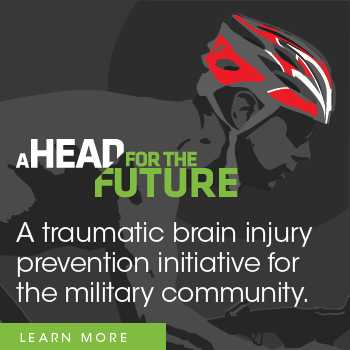TBI: Get the Facts
Overview
Traumatic brain injury (TBI) is a major cause of death and disability in the United States. TBIs contribute to about 30% of all injury deaths.1 Every day, 153 people in the United States die from injuries that include TBI.1 Those who survive a TBI can face effects that last a few days, or the rest of their lives. Effects of TBI can include impaired thinking or memory, movement, sensation (e.g., vision or hearing), or emotional functioning (e.g., personality changes, depression). These issues not only affect individuals but can have lasting effects on families and communities.
What is a TBI?
A TBI is caused by a bump, blow, or jolt to the head that disrupts the normal function of the brain. Not all blows or jolts to the head result in a TBI. The severity of a TBI may range from “mild” (i.e., a brief change in mental status or consciousness) to “severe” (i.e., an extended period of unconsciousness or memory loss after the injury). Most TBIs that occur each year are mild, commonly called concussions.2
How big is the problem?
- In 2013,1 about 2.8 million TBI-related emergency department (ED) visits, hospitalizations, and deaths occurred in the United States.
- TBI contributed to the deaths of nearly 50,000 people.
- TBI was a diagnosis in more than 282,000 hospitalizations and 2.5 million ED visits. These consisted of TBI alone or TBI in combination with other injuries.
- Over the span of six years (2007–2013), while rates of TBI-related ED visits increased by 47%, hospitalization rates decreased by 2.5% and death rates decreased by 5%.
- In 2012, an estimated 329,290 children (age 19 or younger) were treated in U.S. EDs for sports and recreation-related injuries that included a diagnosis of concussion or TBI.3
- From 2001 to 2012, the rate of ED visits for sports and recreation-related injuries with a diagnosis of concussion or TBI, alone or in combination with other injuries, more than doubled among children (age 19 or younger).3
What are the leading causes of TBI?
- In 2013,1 falls were the leading cause of TBI. Falls accounted for 47% of all TBI-related ED visits, hospitalizations, and deaths in the United States. Falls disproportionately affect the youngest and oldest age groups:
- More than half (54%) of TBI-related ED visits hospitalizations, and deaths among children 0 to 14 years were caused by falls.
- Nearly 4 in 5 (79%) TBI-related ED visits, hospitalizations, and deaths in adults aged 65 and older were caused by falls.
- Being struck by or against an object was the second leading cause of TBI, accounting for about 15% of TBI-related ED visits, hospitalizations, and deaths in the United States in 2013.
- Over 1 in 5 (22%) TBI-related ED visits, hospitalizations, and deaths in children less than 15 years of age were caused by being struck by or against an object.
- Among all age groups, motor vehicle crashes were the third overall leading cause of TBI-related ED visits, hospitalizations, and deaths (14%). When looking at just TBI-related deaths, motor vehicle crashes were the third leading cause (19%) in 2013.
- Intentional self-harm was the second leading cause of TBI-related deaths (33%) in 2013.
Risk factors for TBI
Among TBI-related deaths in 2013:1
- Rates were highest for persons 75 years of age and older.
- The leading cause of TBI-related death varied by age.
- Falls were the leading cause of death for persons 65 years of age or older.
- Intentional self-harm was the leading cause of death for persons 25-64 years of age.
- Motor vehicle crashes were the leading cause of death for persons 5-24 years of age.
- Assaults were the leading cause of death for children ages 0-4 years.
Among non-fatal TBI-related injuries in 2013:1
- Hospitalization rates were highest among persons 75 years of age and older.
- Rates of ED visits were highest for persons 75 years of age and older and children 0-4 years of age.
- Falls were the leading cause of TBI-related ED visits for all but one age group.
- Being struck by or against an object was the leading cause of TBI-related ED visits for persons 15 to 24 years of age.
- The leading cause of TBI-related hospitalizations varied by age:
- Falls were the leading cause among children 0-14 years of age and adults 45 years of age and older.
- Motor vehicle crashes were the leading cause of hospitalizations for adolescents and persons 15-44 years of age.
References
- Taylor CA, Bell JM, Breiding MJ, Xu L. Traumatic Brain Injury–Related Emergency Department Visits, Hospitalizations, and Deaths — United States, 2007 and 2013. MMWR Surveill Summ 2017;66(No. SS-9):1–16. DOI: http://dx.doi.org/10.15585/mmwr.ss6609a1
- Centers for Disease Control and Prevention (CDC), National Center for Injury Prevention and Control. Report to Congress on mild traumatic brain injury in the United States: steps to prevent a serious public health problem. Atlanta (GA): Centers for Disease Control and Prevention; 2003.
- Coronado VG, Haileyesus T, Cheng TA, Bell JM, Haarbauer-Krupa J, Lionbarger MR, Flores-Herrera J, McGuire LC, Gilchrist J. Trends in sports- and recreation-related traumatic brain injuries treated in US emergency departments: The National Electronic Injury Surveillance System-All Injury Program (NEISS-AIP) 2001-2012. J Head Trauma Rehabil 2015; 30 (3): 185–197.
- Page last reviewed: April 27, 2017
- Page last updated: April 27, 2017
- Content source:
- Centers for Disease Control and Prevention,
- National Center for Injury Prevention and Control,
- Division of Unintentional Injury Prevention


 ShareCompartir
ShareCompartir

